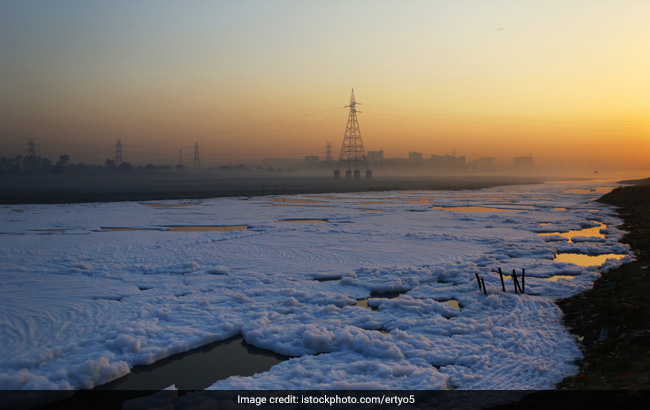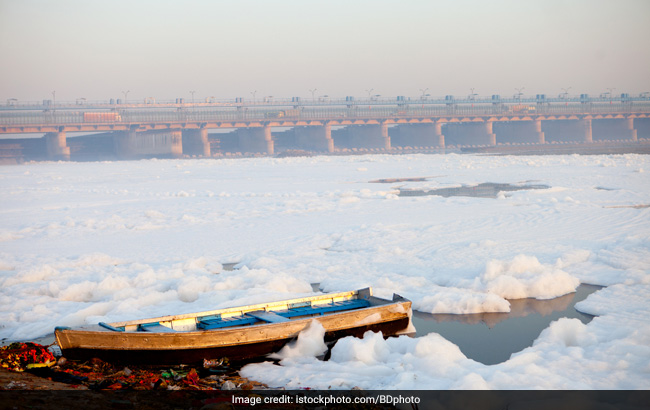New Delhi: India’s longest tributary, Yamuna, is a source of life for millions of people in northern India. As per environmentalists, the waters of Yamuna used to be clearest form of blue, back in early 1900s as compared to the golden hue of the Ganges but owing to the growth in population, industrialisation and urbanisation, especially in the National Capital Region (NCR), the river has become one of the most polluted rivers in the world. Urbanisation, in the present day, is the single largest threat to river sustainability.
New Delhi generates 1,900 million litres per day (MLD) of sewage. Though many attempts have been made to process it, these efforts have proven futile. About 58 per cent of the total waste generated, household and industrial, is being dumped in the river for decades now, which has led to a drastic decline in its water quality.
In July this year, the National Green Tribunal(NGT) had formed a monitoring committee to submit an action plan to clean the river with a detailed report by December 31. The monitoring panel has expressed main concern over the absence of sewer networks in the unauthorised colonies and slums in Delhi and has even termed this issue as the key reason for the pollution of Yamuna. As per the panel, NCR has almost 1797 unauthorised colonies with a population of 40 lakhs which is only growing by the day.
Days before Diwali, environment activists and local authorities were alarmed as dead fish were found floating in the Yamuna, apparently due to the discharge of toxic waste into the river. Thousands of dead fish have been spotted at the river bank since.
Also Read: Haryana To Raise The Issue Of Untreated Water Flowing Into Yamuna With Delhi
Despite the dangerous toxins present in the river, devotees offered prayers to the rising Sun during Chhath Puja, on multiple banks of Yamuna river in New Delhi. The Chhath Puja, is observed over a period of four days during in which devotees fast and abstain from drinking water, stand in water for long periods of time, and offer prasad (prayer offerings) and ‘Arghya’ to the setting and rising Sun.
UN-Habitat estimates the city of Delhi dumps 3 billion litres of waste into the Yamuna each day, and says it is dead, without enough oxygen to support river life. Indian labourers often collect trash near the dams of the Yamuna river to recycle and sell in the local market.
Also Read: Water Shortage Hits Agra, Activists Demand Cleaning Of Yamuna
People in Agra offering prayers to the rising sun during the Chhath puja on the bank of River Yamuna.
Patches of froth in Yamuna near Kalindi Kunj, Delhi. The thick, bubbly froth in the river is said to be the result of poisonous waste and filth dumped into the river. Scientists have termed the river as dead – which means it is so polluted that it can no longer support marine life or should not be used by humans.
National Mission for Clean Ganga (NMCG) Director General Rajiv Ranjan Mishra is following the progress of the Yamuna River Front Development (RFD) project ‘Asita’. The project aims to restore, revive and rejuvenate its flood plains and make them accessible to the people of Delhi with a special focus on reviving the river’s bio-diversity.
NDTV – Dettol Banega Swachh India campaign lends support to the Government of India’s Swachh Bharat Mission (SBM). Helmed by Campaign Ambassador Amitabh Bachchan, the campaign aims to spread awareness about hygiene and sanitation, the importance of building toilets and making India open defecation free (ODF) by October 2019, a target set by Prime Minister Narendra Modi, when he launched Swachh Bharat Abhiyan in 2014. Over the years, the campaign has widened its scope to cover issues like air pollution, waste management, plastic ban, manual scavenging and menstrual hygiene. The campaign has also focused extensively on marine pollution, clean Ganga Project and rejuvenation of Yamuna, two of India’s major river bodies.
































